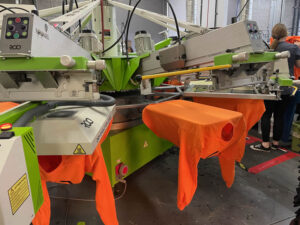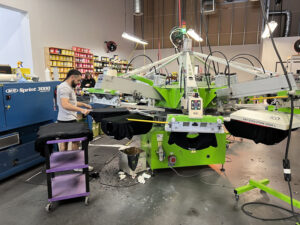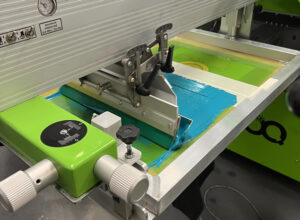T-Shirts. You know you need them. If you’re a graphic artist or illustrator ready to market your designs, creating custom T-Shirts is the most logical place to start. They’re easily identifiable and a quick medium for getting your message across instantaneously. Your shirts market themselves; all you have to do is create the design. Following a couple of tips and tricks can make the process from design to printing an easier process. Combining your creativity with a few “do’s and don’ts” will result in less frustration and a quality-made product.
T-Shirts. You know you need them. If you’re a graphic artist or illustrator ready to market your designs, creating custom T-Shirts is the most logical place to start. They’re easily identifiable and a quick medium for getting your message across instantaneously. Your shirts market themselves; all you have to do is create the design.
Following a couple of tips and tricks can make the process from design to printing an easier process. Combining your creativity with a few “do’s and don’ts” will result in less frustration and a quality-made product.
Begin with an Education
If you think about it, T-Shirts have recorded American history and pop culture references for decades. Concert tees, political tees, sports, cartoons, humorous, and all the tees in between could have subtle references to things we may not want to include. Be aware of generational slang.
Know your audience. Educate yourself on modern pop culture and be aware of the perceived context. Some phrases or design elements might not mean what they used to mean. It’s easy for a small, inconsequential element to become the focus of a project if it’s deemed as inappropriate for it’s demographic.
Brainstorm
Sketch out your ideas and design. Then have lunch. Take a walk. Do something to give your mind a rest. When you come back to it with fresh eyes, you may want to add something here or take away something there. Wait until the next day and revisit it. Even if your vision for this design is clear, draw a couple of alternatives in case focus shifts.
Bring Your Design to Life
The vision in your mind is finally out and on paper. The next step is to get it onto a T-shirt. Different textures and sizes could easily skew your design. Draw a life-sized version to see if it will translate well to fabric. Attach it to a shirt for a better idea of its span on different sizes. Visit your local printer to touch samples and discuss which colors, textures, and lines match with which T-Shirts.
Clean Lines
Lines are an important part of the design element for a couple of reasons.
- Provide separation, identifying each section.
- Create a focal point.
A good design will have parts separated by clearly defined lines. Not only are you creating a crisper image, but you are guiding gazes to what you want them to see first. Dark outlines give a strong or bold impression.
A Balanced Design
There are two types of designs. Symmetrical, where each side of the T-Shirt mirrors the other. Asymmetrical is when one big focal point is balanced out with multiple smaller ones. Eyes are drawn to the area with the most detail, so you have some control over perception.
Choose Color
The most popular base T-Shirt color is black, followed by white. Colorful graphics are a great display for these backgrounds. Colors have been known to grab attention and are linked to changes in mood. You should pick colors that complement each other. A random bunch of colors will look more like an ink accident than design.
Something Symbolic and Simple
T-shirts that have a symbolic design on them tend to be more popular than those who don’t. If you create a symbol that represents support for a cause or movement, your tee circulates in a broader audience. You want to keep the message short without a lot of clutter. Don’t go overboard with colors and avoid using very light ink over white or dark inks over black. That’s like winking at someone in the dark.
Know The Printer
Congratulations! Now it’s time to get that design to the printer. If you think your work is over, you might want to reconsider that idea. At this stage, you choose the specifics for your T-shirt. While there, you will need to consider sizes, fabric weight, texture, and ink. This part is as important as the quality of the design. Screenprinting is an art form. Choose a good one!
“I think just having a good idea of how screen printing works is the most essential thing. Being able to separate colors for print means you can supply things print ready. Not only does that make you easier to work with for the clients, but it gives you an edge over designers that might not know much about the process…”
~Dan Mumford, Graphic Designer
We Can Take It from Here
At LogoWear Express, we are excited to turn your vision into reality. While we do take out-of-town orders, we pride ourselves on our showcase located on North Arizona Ave in Chandler. Come in to see the selection, touch our samples and evaluate your T-shirt’s wear-ability. We have over 3000 suppliers so check out our inventory. Call us at 480-545-2677 or click here to get a FREE custom quote.




